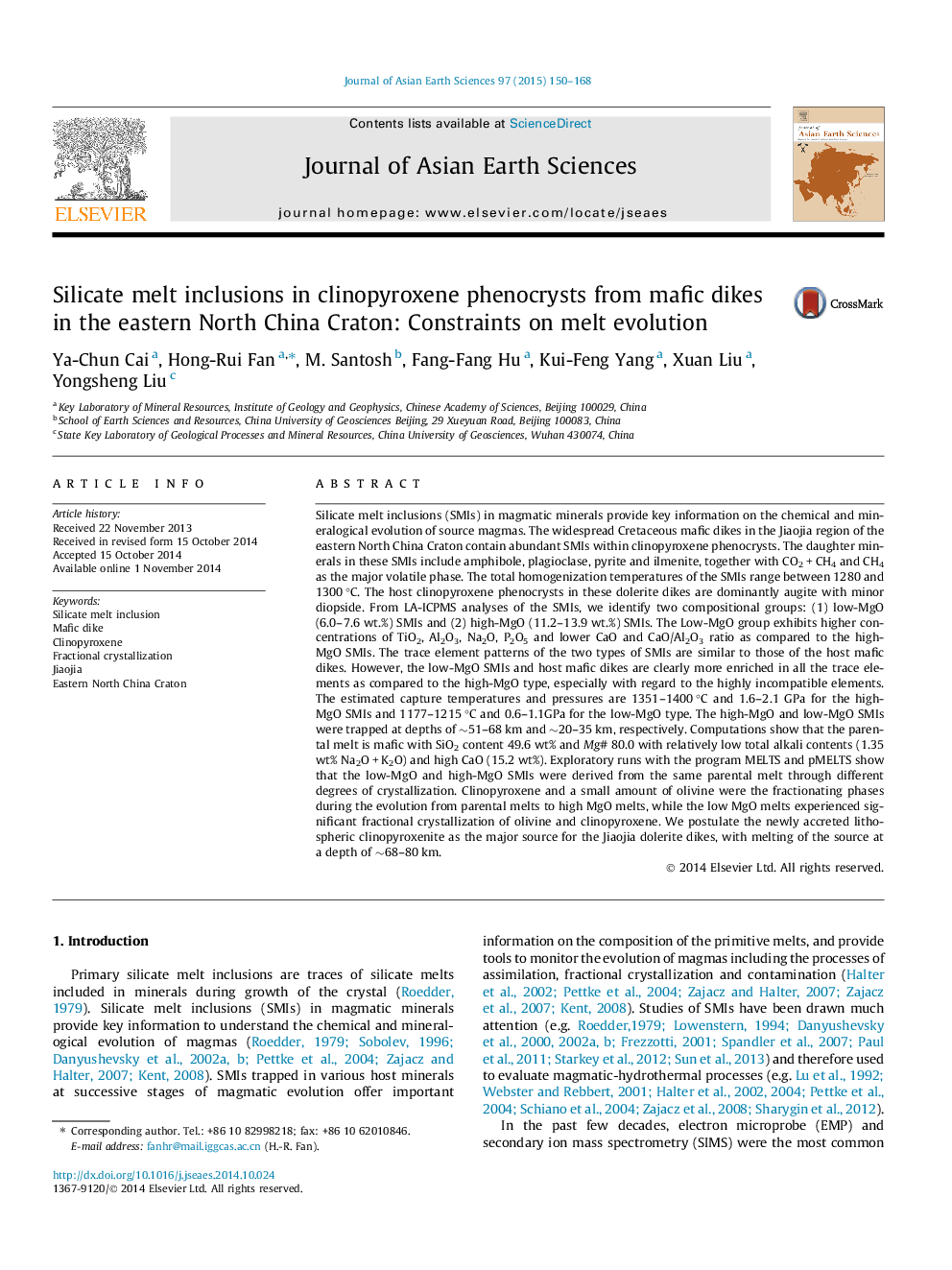| کد مقاله | کد نشریه | سال انتشار | مقاله انگلیسی | نسخه تمام متن |
|---|---|---|---|---|
| 4730601 | 1356767 | 2015 | 19 صفحه PDF | دانلود رایگان |
• The SMIs can be divided into two groups: (1) low-MgO SMIs and (2) high-MgO SMIs.
• The parental melt is mafic (Mg# 80.0) and shows low alkali and high CaO contents.
• Cpx and Ol were major fractionating phases from parental melt to low MgO melt.
• Newly lithospheric clinopyroxenite was the source of Jiaojia dolerite dikes.
• The melting of the source occurred at a depth of ∼68–80 km.
Silicate melt inclusions (SMIs) in magmatic minerals provide key information on the chemical and mineralogical evolution of source magmas. The widespread Cretaceous mafic dikes in the Jiaojia region of the eastern North China Craton contain abundant SMIs within clinopyroxene phenocrysts. The daughter minerals in these SMIs include amphibole, plagioclase, pyrite and ilmenite, together with CO2 + CH4 and CH4 as the major volatile phase. The total homogenization temperatures of the SMIs range between 1280 and 1300 °C. The host clinopyroxene phenocrysts in these dolerite dikes are dominantly augite with minor diopside. From LA-ICPMS analyses of the SMIs, we identify two compositional groups: (1) low-MgO (6.0–7.6 wt.%) SMIs and (2) high-MgO (11.2–13.9 wt.%) SMIs. The Low-MgO group exhibits higher concentrations of TiO2, Al2O3, Na2O, P2O5 and lower CaO and CaO/Al2O3 ratio as compared to the high-MgO SMIs. The trace element patterns of the two types of SMIs are similar to those of the host mafic dikes. However, the low-MgO SMIs and host mafic dikes are clearly more enriched in all the trace elements as compared to the high-MgO type, especially with regard to the highly incompatible elements. The estimated capture temperatures and pressures are 1351–1400 °C and 1.6–2.1 GPa for the high-MgO SMIs and 1177–1215 °C and 0.6–1.1GPa for the low-MgO type. The high-MgO and low-MgO SMIs were trapped at depths of ∼51–68 km and ∼20–35 km, respectively. Computations show that the parental melt is mafic with SiO2 content 49.6 wt% and Mg# 80.0 with relatively low total alkali contents (1.35 wt% Na2O + K2O) and high CaO (15.2 wt%). Exploratory runs with the program MELTS and pMELTS show that the low-MgO and high-MgO SMIs were derived from the same parental melt through different degrees of crystallization. Clinopyroxene and a small amount of olivine were the fractionating phases during the evolution from parental melts to high MgO melts, while the low MgO melts experienced significant fractional crystallization of olivine and clinopyroxene. We postulate the newly accreted lithospheric clinopyroxenite as the major source for the Jiaojia dolerite dikes, with melting of the source at a depth of ∼68–80 km.
Journal: Journal of Asian Earth Sciences - Volume 97, Part A, 1 January 2015, Pages 150–168
